We ask you, humbly: don't scroll away.
Hi readers, it seems you use Catholic Online a lot; that's great! It's a little awkward to ask, but we need your help. If you have already donated, we sincerely thank you. We're not salespeople, but we depend on donations averaging $14.76 and fewer than 1% of readers give. If you donate just $5.00, the price of your coffee, Catholic Online School could keep thriving. Thank you.Help Now >
Dogma of Immaculate Conception Opened a New Era
FREE Catholic Classes
Interview With Journalist Vincenzo Sansonetti
ROME, JAN. 8, 2005 (Zenit) - Proclamation of the dogma of the Immaculate Conception was a providential event that reinvigorated "an exhausted Church" by reminding the faithful of "the existence of original sin and Christ's redemption."
So says Vincenzo Sansonetti, who worked for the Italian episcopal conference's newspaper Avvenire from 1976 to 1989.
In this interview with us he highlighted striking passages of his new book "The Immaculate Conception. From Pius IX's Dogma to Medjugorje" ("L'Immacolata Concezione. Dal Dogma di Pio IX a Medjugorje"), published in Italy by Piemme.
Since 1989, Sansonetti has been special envoy of and responsible for the cultural pages of the weekly Oggi; he also contributes to reviews such as Mass Media, Studi Cattolici, and Timone.
Q: When and why did the Holy See, all of a sudden, change its position on this mystery of faith, the object of devotion since the very first years of the Church?
Sansonetti: Rather than a change, one may speak of progressive maturation through the centuries which led the Popes to "support," with discretion but attention, popular devotion and the liturgical feast, for centuries already present in the Church.
The Popes were like arbiters in the disputes, often bitter, between the "maculates" and the "immaculates," led by Dominicans and Franciscans.
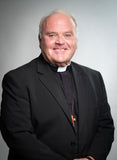 Hi readers, it seems you use Catholic Online a lot; that's great! It's a little awkward to ask, but we need your help. If you have already donated, we sincerely thank you. We're not salespeople, but we depend on donations averaging $14.76 and fewer than 1% of readers give. If you donate just $5.00, the price of your coffee, Catholic Online School could keep thriving. Thank you. Help Now >
Hi readers, it seems you use Catholic Online a lot; that's great! It's a little awkward to ask, but we need your help. If you have already donated, we sincerely thank you. We're not salespeople, but we depend on donations averaging $14.76 and fewer than 1% of readers give. If you donate just $5.00, the price of your coffee, Catholic Online School could keep thriving. Thank you. Help Now >
However, if one wishes to identify a crucial point, it must be found in the forced exile of Pope Pius IX, forced to flee to Gaeta, a fortress located in the Kingdom of the Two Sicilies, to remove himself from the fierce anti-Catholic and anti-papal persecution of the Roman Republic, led by Freemason Giuseppe Mazzini.
The book opens with an almost cinematographic scene, on a cold morning of January 1849, when Pope Mastai Ferretti went out on the balcony of the palace that offered him hospitality and saw a stormy sea. He was worried. Cardinal Lambruschini, who was by his side, said to him: "Your Holiness, the world will only be cured of the evils that oppress it ... by proclaiming the dogma of the Immaculate Conception. Only this doctrinal definition will re-establish the sense of Christian truths."
A few days later, from Gaeta, Pius IX published the encyclical "Ubi Primum" in which he asked all bishops worldwide to define themselves on the dogma of the Immaculate Conception.
The result was virtually a plebiscite and, on December 8, 1854, the Pope pronounced the solemn declaration that "the Most Blessed Virgin Mary, from the first moment of her conception, by special grace and privilege of God and in view of the merits of Jesus Christ, was preserved immune from all stain of original sin."
Q: The promulgation of this dogma took place in a period, heir to the Enlightenment, which in Italy enabled Giuseppe Mazzini to say: "A new era is arising which does not admit Christianity" and that was, as you affirm, characterized by a certain decadence in the life of the Church. Do you believe that this historical and ecclesial event had some affinity with what happened, for example, with the apparition of the Virgin of Guadalupe and, therefore, that it must be interpreted as the response of grace to an impossible human situation?
Sansonetti: The Guadalupe apparition in Mexico completed the evangelization of Latin America in the 16th century. The proclamation of the dogma of the Immaculate Conception, gave back vigor, in the mid-19th century, to an exhausted Church in a tight spot, by recalling the existence of original sin and the redemption of Christ.
They were providential events, which corresponded to a mysterious divine plan. And it is amazing that, four years after the proclamation of the dogma, on February 11, 1858, Our Lady appeared in Lourdes calling herself the Immaculate Conception, confirming the dogma.
She could have done so earlier -- there were tens, if not hundreds, of Marian apparitions prior to Lourdes -- but the Virgin respects the human way, the steps of the Church. And she described herself as the "immaculate" only "after" Pius IX's Bull of December 8, 1854.
Q: Can you tell us something about the supernatural events that reporters of that time wrote in regard to the promulgation of the bull "Ineffabilis Deus"?
Sansonetti: On the morning of December 8, 1854, in St. Peter's Basilica in the Vatican, a ray of light fell on Pius IX at the moment of the reading of the bull "Ineffabilis Deus." An amazing phenomenon, because in no season, and much less so just before winter, and from no window of the Vatican basilica, could a ray of light reach the apse where the Pope was. It was seen as a kind of heavenly approval, the hope of a joyful future in the midst of the tormented life of the Church at the time.
A few months later, on April 12, 1855, Pius IX was visiting the "Propaganda Fide" School in Rome. All of a sudden the pavement opened up. That instant, the Pope cried out: "Immaculate Virgin, help us!" Miraculously, no one was hurt. For a century in that school the custom continued among the students, when dismissed for a break, to repeat the prayer "Immaculate Virgin, help us!"
Q: In "Ineffabilis Deus," Pius IX, in declaring the doctrine of the Immaculate Conception, said that it was destined for "the exaltation of the Catholic faith and the enhancement of the Christian religion." What were the benefits obtained with the definition?
Sansonetti: It was another Pope who described the benefits for the life of the Church: St. Pius X, in the encyclical "Ad Diem Illum Laetissimum," published in 1904, fifty years after the proclamation of the dogma.
In addition to "the hidden gifts of graces" given by God to the Church through the intercession of Mary, Pope Sarto recalled: the convocation of Vatican Council I in 1870, with the dogmatic definition of papal infallibility; the "new and never before seen fervor of piety with which the faithful of all classes and nations, have been coming, for a long time, to venerate the Vicar of Christ"; the longevity of the pontificates of Pius IX and Leo XIII, most wise pilots of the Church; the "apparitions of the Immaculate in Lourdes and the flourishing of miracles and piety."
Missions, charity and culture flourished again, and the presence and visibility of Catholics returned to social life. An amazing example: On the day of the Assumption of 1895, after the courageous example of the Catholics of Roubaix, Eucharistic processions, which had been prohibited, resumed throughout France.
Q: During John Paul II's visit to Lourdes [last] year, on the day of the Assumption, papal spokesman Navarro Valls said: "The Pope has come to ask for healing not only of physical illness but of the gravest sickness that torments the modern world: forgetfulness of original sin."
Sansonetti: In reality, with his reminder of original sin, John Paul II did nothing other than repeat something already clear at the end of the 19th century, the century of Pius IX and of the dogma of the Immaculate Conception. And, on top of that, in environments that were certainly not clerical.
At the end of the 19th century, the poet Baudelaire, who was certainly not a flatterer, said: "The greatest heresy of our time is the negation of original sin!" This heresy is still alive and acting.
Suffice it to think of the campaign against the former Italian Minister Rocco Buttiglione, a Catholic, obliged to give up his candidature for European Commissioner for Justice and Liberties, for having used the word "sin" during a hearing.
Sin and original sin are denied because there is the desire to affirm the idea of man totally liberated from a supernatural dependence, from a Creator, a man who does not acknowledge his limitations and puts himself in God's place.
But man, freed from this bond, without a religious reference, becomes a tyrant to himself, prey to utopias and totalitarianisms. From a man without God, spring Nazism, Communism and the present terrorism that uses the word "god" for its bloody ends.
Mary Immaculate, with her gentle and benevolent smile, just as she has been pictured, has crushed the serpent's head and leads us by the hand toward Paradise, toward the immaculate condition that is her privilege, though promised to us all.
Contact
Catholic Online
https://www.catholic.org
CA, US
Catholic Online - Publisher, 661 869-1000
info@yourcatholicvoice.org
Keywords
Immaculate Conception, Mary, Church, Catholic, Christ, Sin
We ask you, humbly: don't scroll away.
Hi readers, it seems you use Catholic Online a lot; that's great! It's a little awkward to ask, but we need your help. If you have already donated, we sincerely thank you. We're not salespeople, but we depend on donations averaging $14.76 and fewer than 1% of readers give. If you donate just $5.00, the price of your coffee, Catholic Online School could keep thriving. Thank you.Help Now >
More Catholic PRWire
Showing 1 - 50 of 4,716
A Recession Antidote
Randy Hain
Monaco & The Vatican: Monaco's Grace Kelly Exhibit to Rome--A Review of Monegasque-Holy See Diplomatic History
Dna. Maria St. Catherine Sharpe, t.o.s.m., T.O.SS.T.
The Why of Jesus' Death: A Pauline Perspective
Jerom Paul
A Royal Betrayal: Catholic Monaco Liberalizes Abortion
Dna. Maria St.Catherine De Grace Sharpe, t.o.s.m., T.O.SS.T.
Embrace every moment as sacred time
Mary Regina Morrell
My Dad
JoMarie Grinkiewicz
Letting go is simple wisdom with divine potential
Mary Regina Morrell
Father Lombardi's Address on Catholic Media
Catholic Online
Pope's Words to Pontifical Latin American College
Catholic Online
Prelate: Genetics Needs a Conscience
Catholic Online
State Aid for Catholic Schools: Help or Hindrance?
Catholic Online
Scorsese Planning Movie on Japanese Martyrs
Catholic Online
2 Nuns Kidnapped in Kenya Set Free
Catholic Online
Holy See-Israel Negotiation Moves Forward
Catholic Online
Franchising to Evangelize
Catholic Online
Catholics Decry Anti-Christianity in Israel
Catholic Online
Pope and Gordon Brown Meet About Development Aid
Catholic Online
Pontiff Backs Latin America's Continental Mission
Catholic Online
Cardinal Warns Against Anti-Catholic Education
Catholic Online
Full Circle
Robert Gieb
Three words to a deeper faith
Paul Sposite
Relections for Lent 2009
chris anthony
Wisdom lies beyond the surface of life
Mary Regina Morrell
World Food Program Director on Lent
Catholic Online
Moral Clarity
DAN SHEA
Pope's Lenten Message for 2009
Catholic Online
A Prayer for Monaco: Remembering the Faith Legacy of Prince Rainier III & Princess Grace and Contemplating the Moral Challenges of Prince Albert II
Dna. Maria St. Catherine Sharpe
Keeping a Lid on Permissiveness
Sally Connolly
Glimpse of Me
Sarah Reinhard
The 3 stages of life
Michele Szekely
Sex and the Married Woman
Cheryl Dickow
A Catholic Woman Returns to the Church
Cheryl Dickow
Modernity & Morality
Dan Shea
Just a Minute
Sarah Reinhard
Catholic identity ... triumphant reemergence!
Hugh McNichol
Edging God Out
Paul Sposite
Burying a St. Joseph Statue
Cheryl Dickow
George Bush Speaks on Papal Visit
Catholic Online
Sometimes moving forward means moving the canoe
Mary Regina Morrell
Action Changes Things: Teaching our Kids about Community Service
Lisa Hendey
Easter... A Way of Life
Paul Spoisite
Papal initiative...peace and harmony!
Hugh McNichol
Proclaim the mysteries of the Resurrection!
Hugh McNichol
Jerusalem Patriarch's Easter Message
Catholic Online
Good Friday Sermon of Father Cantalamessa
Catholic Online
Papal Address at the End of the Way of the Cross
Catholic Online
Cardinal Zen's Meditations for Via Crucis
Catholic Online
Interview With Vatican Aide on Jewish-Catholic Relations
Catholic Online
Pope Benedict XVI On the Easter Triduum
Catholic Online
Holy Saturday...anticipation!
Hugh McNichol








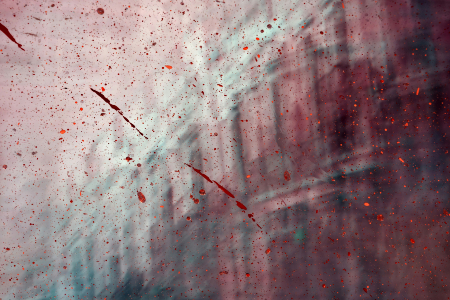
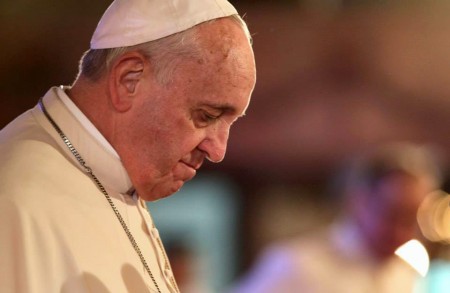
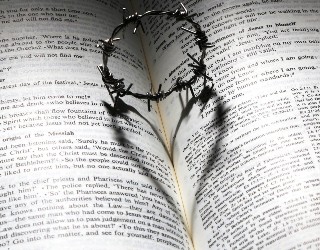
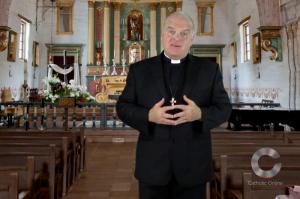 Daily Readings for Friday, April 19, 2024
Daily Readings for Friday, April 19, 2024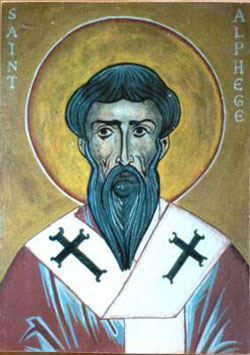 St. Alphege: Saint of the Day for Friday, April 19, 2024
St. Alphege: Saint of the Day for Friday, April 19, 2024 Stewardship Prayer: Prayer of the Day for Friday, April 19, 2024
Stewardship Prayer: Prayer of the Day for Friday, April 19, 2024


